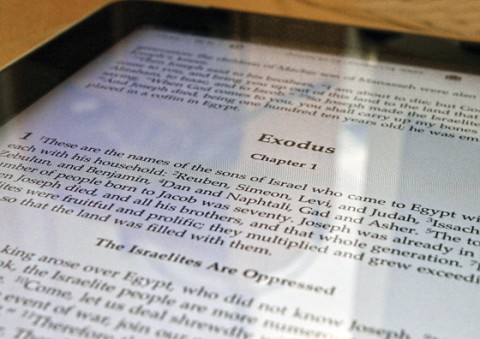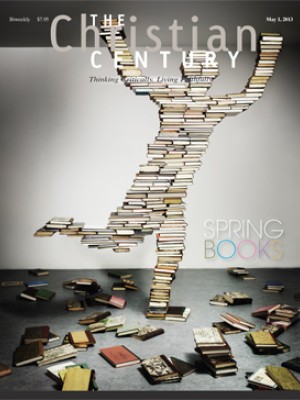Holy digital: The Bible on iPad

I grew up in a tradition in which nearly everyone carried a Bible to church. Sermons were expository, usually providing close readings of texts, and Sunday school classes for adults and children were Bible studies. A friend of mine who grew up in a similar tradition once noted that we didn’t defend or explain why we studied the Bible, we just assumed that that’s what we were supposed to do as Christians.
The church I now attend is part of the same tradition, but some things have changed. Very few people carry a Bible to church. Sermons, while based on lectionary texts, are rarely close readings of the texts. Very few of the adult education classes concentrate on the Bible. Most Sunday school classes are on topical matters of the Christian life.
Read our latest issue or browse back issues.
Nevertheless, my wife and I continued for years to carry our personal Bibles to church. Call us diehards, if you wish. I think we were making a symbolic statement: we belong to a community of faith that is tied to a sacred text. Besides, we liked to follow along with scripture readings using Bibles that we were familiar with.
But I stopped carrying a Bible to church about two years ago. I had started using the Bible on my smartphone (turned to airplane mode so the phone wouldn’t ring during the service). For a while I still used an annotated New Revised Standard Version Bible for study at home, but then I discontinued that practice as well. My default Bible now is on my iPad. The iPad can hold multiple translations of the Bible; it’s easy to use, search and notate; and it’s small and light to carry around.
Still, I miss reading and studying a bound copy of the Bible. I miss the tactile sense of engaging a sacred text. One of my study Bibles would naturally fall open to the Sermon on the Mount, a text I’ve read and studied frequently. I can visualize where certain texts fall on the pages in my old Bible, and I know where my handwritten notes are. As Albrecht Bengel (1687–1752) said, the good student of the Bible “applies the text wholly to himself and applies himself wholly to the text.” I find that harder to do with an iPad and a digital text than with a printed Bible.
A theologian friend compares bound Bibles to clocks. With a clock you see the sweep of time; with a digital watch you see only the present. A Bible laid out in pages reminds us of the sweeping history of God’s engagement with God’s people. A digital text hides that sweep from view—you see only the particular text you’ve opened.
So I’m betwixt and between, a bit like I was when I made the shift from the King James Version to the Revised Standard Version. I had to think about which translation to quote or memorize. I suspect I will live with this tension the rest of my life, torn between my delight in the ease and versatility of a digital Bible and my longing for a tangible book to cherish.






